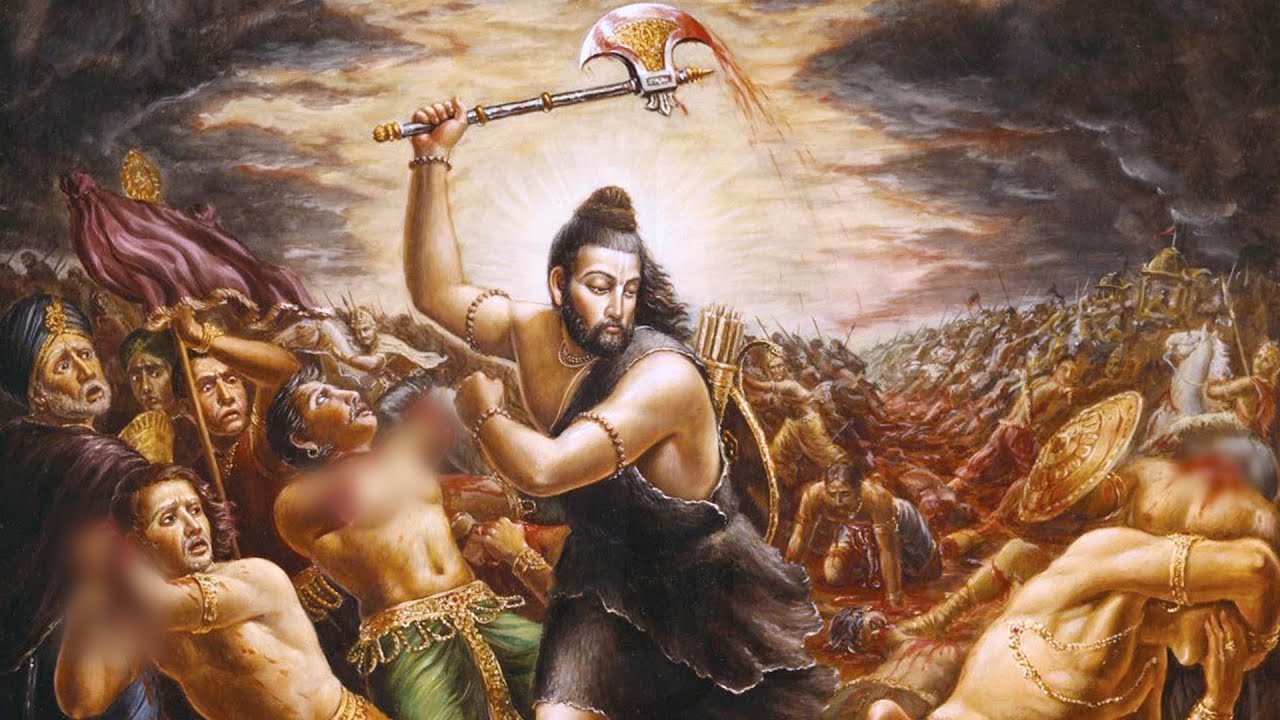The Divine Chastiser of Corrupt Kṣatriyas
Among the divine incarnations of the Supreme Personality of Godhead, Lord Paraśurāma stands out as a powerful emblem of justice, discipline, and divine intervention. While many know Him as the warrior sage, few realize the deep transcendental purpose behind His appearance and actions. As revealed in the Śrīmad-Bhāgavatam (2.7.22), Lord Paraśurāma descended to rectify the imbalance caused by the unrighteousness of the ruling class—the Kṣatriyas—and reestablish the sanctity of dharma.
The Context: Kṣatriyas Corrupted by Power
The Kṣatriyas, or rulers, are traditionally empowered to protect and govern society in accordance with dharma. Their duty is to safeguard the populace, uphold righteousness, and ensure justice. However, as history has repeatedly shown, when power is misused, it corrupts absolutely.
There came a time on earth when the Kṣatriyas had deviated from their noble responsibilities. Instead of serving the people, they exploited them; instead of protecting the sages and the sacred institutions, they oppressed them. The degradation was so extreme that it warranted divine chastisement.
The Mission of Lord Paraśurāma
As stated in Śrīmad-Bhāgavatam (2.7.22), “The kṣatriyas, or the men who possess the ruling powers, when they become irreligious, become a burden on the earth, and the Lord appears just to minimize such burdens. Lord Paraśurāma cut down twenty-one times all the kṣatriyas who had become a burden to the earth.”
Lord Paraśurāma, though born in a brāhmaṇa family, took up the role of a warrior to execute the will of the Supreme. He was a son of Jamadagni Muni and belonged to the Bhṛgu dynasty. When his noble father was treacherously murdered by an envious Kṣatriya, Lord Paraśurāma took a vow to rid the world of all such demoniac rulers. And true to his word, He annihilated the Kṣatriyas not once, but twenty-one times over.
This was not an act of vengeance—it was the surgical intervention of the divine surgeon removing a festering disease from the body of society.
More Than a Warrior: A Devotee of Dharma
Despite His ferocious campaign, Lord Paraśurāma was never driven by personal anger or material motivations. He was acting under the order of the Supreme Personality of Godhead and executing divine justice. His actions demonstrate how one can remain completely surrendered to the Lord’s will while appearing to engage in the severest tasks.
He upheld the dignity of the brāhmaṇas, reinstated proper leadership, and restored the spiritual order of society. Eventually, having fulfilled His mission, He renounced violence and took to the path of austerity and meditation.
Lessons for Modern Society
The appearance and actions of Lord Paraśurāma carry deep lessons for humanity today.
-
Power Must Serve Dharma: Leadership without righteousness leads to tyranny. Those in power must be guided by divine principles and not personal ambition or ego.
-
Divine Intervention Is Real: Whenever there is a decline in dharma and a rise in adharma, the Lord incarnates to rectify the situation (BG 4.7). Lord Paraśurāma is a direct proof of this principle.
-
Varnas Are Functional, Not Absolute: Though He was born in a brāhmaṇa family, Lord Paraśurāma displayed Kṣatriya qualities to fulfill a higher duty. This shows that one’s varṇa is defined by qualities and actions, not merely by birth.
-
Dharma Is Paramount: Even for a divine personality like Lord Paraśurāma, every action was centered on protecting dharma. No relationship, attachment, or social construct can supersede this duty.
The Divine Balance
Paraśurāma’s pastime is a stark reminder of the necessity of balance in society. When spiritual values erode, even the most sophisticated systems become demonic. The Kṣatriyas, empowered by divine arrangement, became abusers of that very power—and the Lord intervened.
Today, we may not witness such physical annihilation, but the principle remains: the Supreme Lord does not tolerate arrogance, injustice, or oppression, especially when perpetrated by those entrusted with leadership. Through time, He sends messengers, scriptures, and, when necessary, descends Himself to restore balance.
Call to Action
As followers of dharma, we must take inspiration from Lord Paraśurāma—not in His axe-wielding destruction, but in His unwavering commitment to uphold righteousness, no matter the cost.
Let us examine the systems around us—our leadership, our communities, our personal lives—and ask: are we upholding dharma? Are we complacent in the face of injustice? Are we silently tolerating adharma under the pretext of politeness?
Let us also remember that we do not have to take up arms; we must take up the Gītā, the Bhāgavatam, and the chanting of the holy name. These are our divine weapons. By following the path of bhakti, we purify ourselves and influence the world with divine light.
Conclusion
Lord Paraśurāma’s incarnation is not a mere historical tale. It is a divine blueprint for how to respond when power becomes poison. It teaches us that righteousness must be defended, that power must be accountable, and that ultimately, the Supreme Lord watches over everything.
Let us invoke the spirit of Lord Paraśurāma—not in violence, but in valiance; not in vengeance, but in virtue. Let us surrender to the Lord, live by His principles, and become instruments of His divine will in this world.
Hare Kṛṣṇa.




